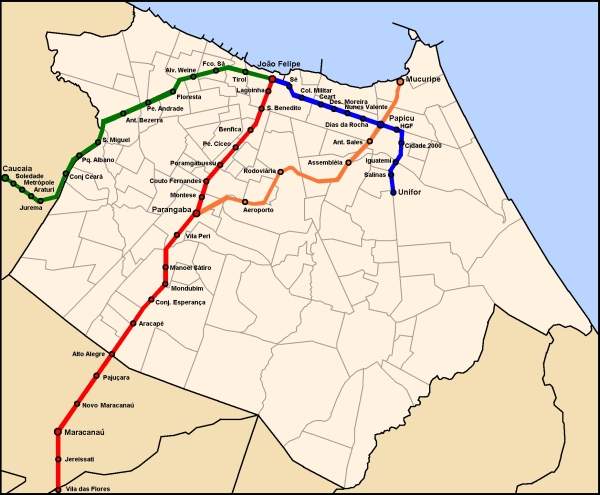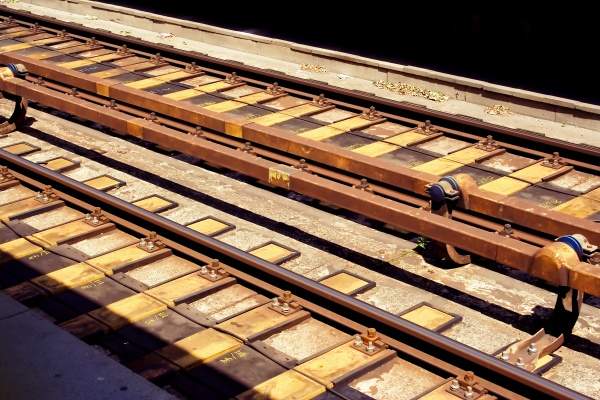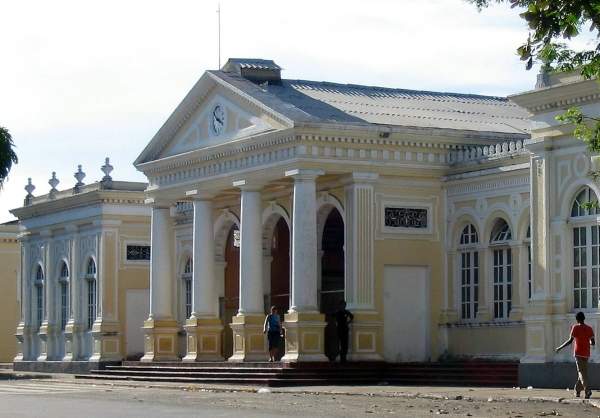The Brazilian light rail operator Metrofor is modernising its existing rail network in the city of Fortaleza. The project aims to provide a reliable and comfortable rail service to the population of Fortaleza, Caucaia, Marazion and Pacatuba. The need for a fast and reliable transport has become even more evident with Brazil hosting the 2014 Federation Internationale de Football Association (FIFA) World Cup.
The $592.2m modernisation project is a part of the growth acceleration plan (PAC) and will witness integration of the railway with other transportation modes such as the subways and buses. It has been under construction for more than 12 years.
Secretaria da Infraestrutura do Estado do Ceará is the developer.
The modernisation plans were developed in early 1980s and civil works commenced in August 1999. The works involve duplication and electrification of two main passenger rail lines, installation of modern signalling and communications system, construction of new stations and acquisition of new rolling stock.
The upgraded rail network is expected to serve nearly 700,000 passengers a day upon beginning operations in 2014.
Lines and routes of the Fortaleza metro rail project
The existing Fortaleza rail infrastructure consists of 43km of rail track, comprising three lines.
The 24km long South Line provides passenger services between Vila das Flores in Maracanaú to João Felipe in central Fortaleza.
The West Line, also a passenger line, is 12.7km long. It begins at João Felipe and terminates at Caucai.
The third line is a cargo line running between Macuripe and Parangaba.
Rail network modernisation project details
The Metrofor rail project is being carried out in three stages. About 4km of the rail track runs underground and 4.4km runs at elevated level.
Stage 1 involved double tracking and electrification of the metre-gauge South Line. A new 4km long tunnel was constructed within the route in the city centre. The route hosts 18 stations, of which seven are newly constructed.
The estimated cost of upgrading the South Line is R$1.705bn (approximately $1bn). Test runs on the new 3kV DC electrified tracks commenced from July 2011. The line is scheduled to become operational in the first quarter of 2012. The South Line is expected to be used by 350,000 passengers a day.
Stage II involves double tracking of the West Line. The line is currently serviced by diesel trains and will be serviced by the existing fleet operating on the South Line. The existing rolling stock of South Line will be overhauled for service on the West Line. Plans to invite tenders for the construction of second line were announced in May 2011.
The estimated cost of Stage II is R$266m ($160m approximately), of which R$170m ($102m) will be financed by federal savings bank Caixa Econômica Federal (CEF) and R$95.5m ($57.3) by Ceará state government. The West Line is expected to transport 90,000 passengers a day upon completion of stage II.
The State Government plans to extend the cargo line from Parangaba to Centro de Manutecao in the south.
It also plans to convert this line into a passenger line. The extended line will pass through Castelão Stadium which will host the 2014 Olympic Games.
Infrastructure of the proposed Brazilian rail network
Seven new 110m long platforms are constructed on the South Line route. The line now has 18 intermediate stations. The West Line has nine stops.
Tunnel construction on the South Line involved removal of utility pipes, poles and trees that interfered with the route and track alignment.
The run-guide and pre-cast modules were placed to ensure the vertical alignment of the diaphragm wall. The soil was then excavated to a depth to receive the stone ceiling of the tunnel. The side area was backfilled and developed as emergency walkway and permanent way.
Rolling stock for Metrofor’s rail system modernisation
An €86m ($122.1m) worth contract to deliver 20 electric multiple units (EMUs) was awarded to AnsaldoBreda in July 2009.
As of July 2011, two train-sets were delivered and six more are due to be delivered by the year end. All the 20 trains are expected to be operational by the end of 2012.
Each train will measure 40m long and will comprise of three cars. It will run at a top speed of 120km/h and carry 445 passengers.
The trains will be air-conditioned and equipped with internal and external audio and visual communication systems.
The engineering and design services for the South Line were provided by US-based MWH.






